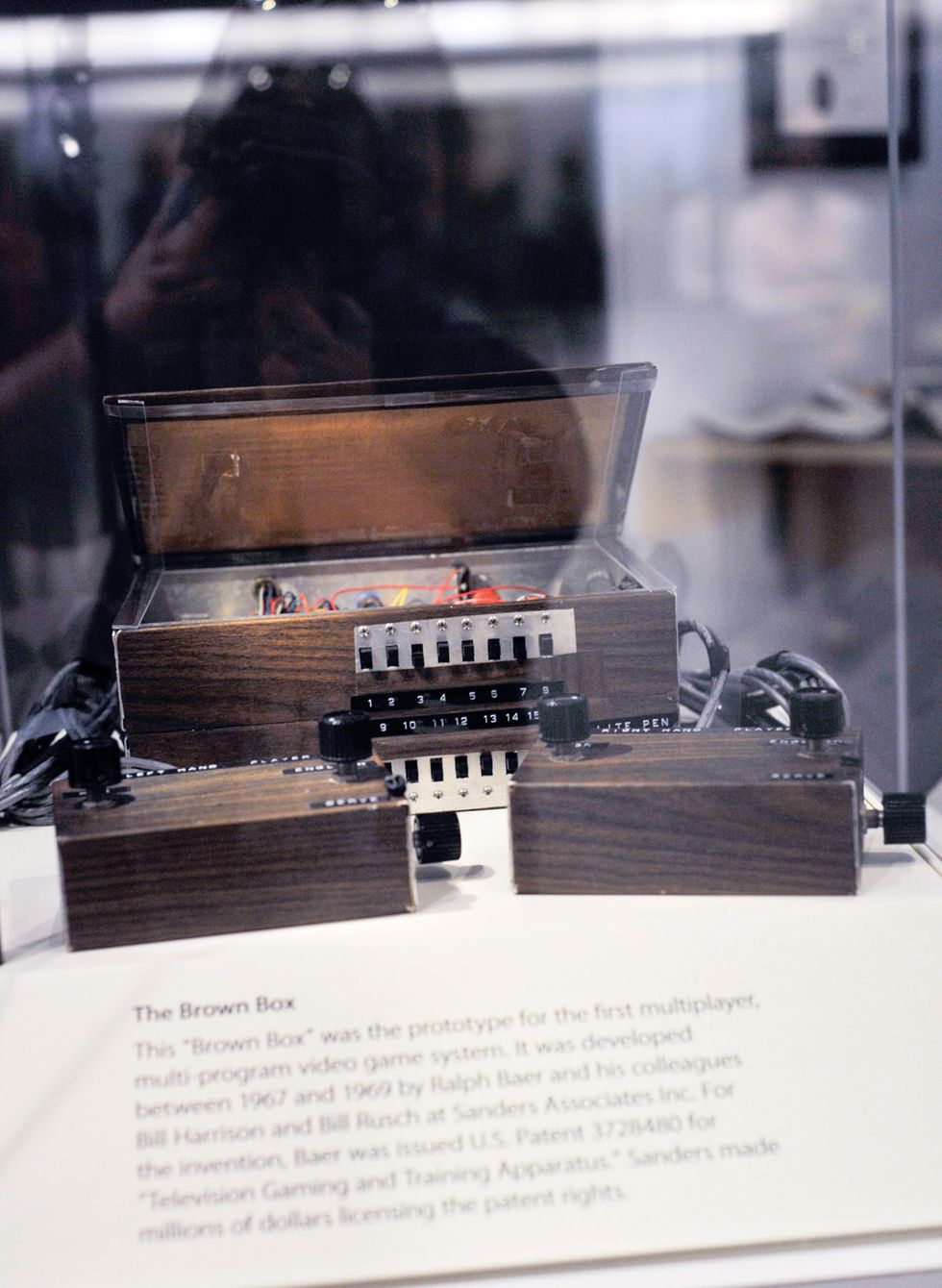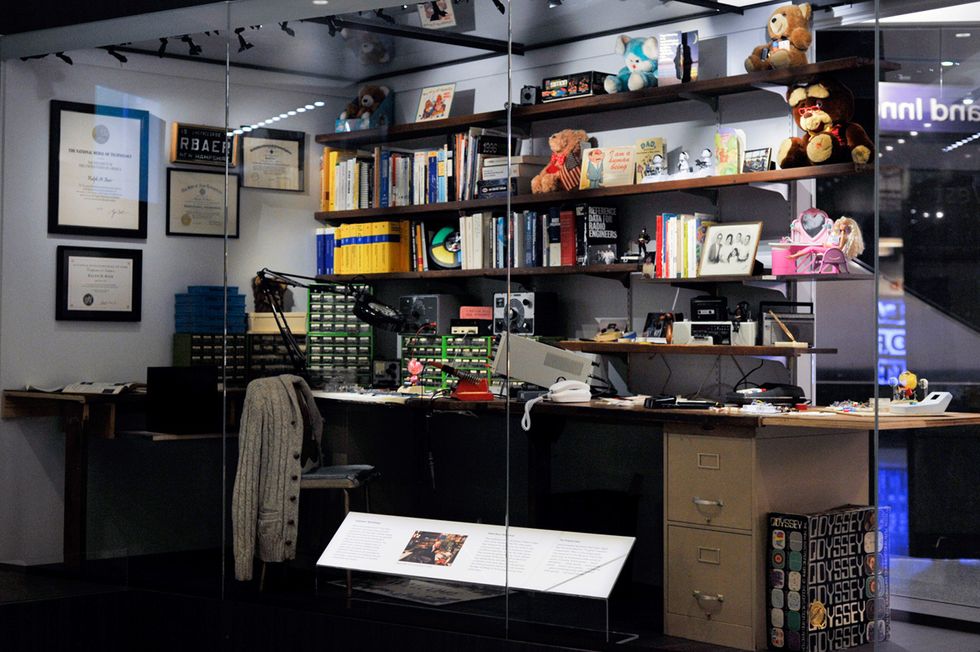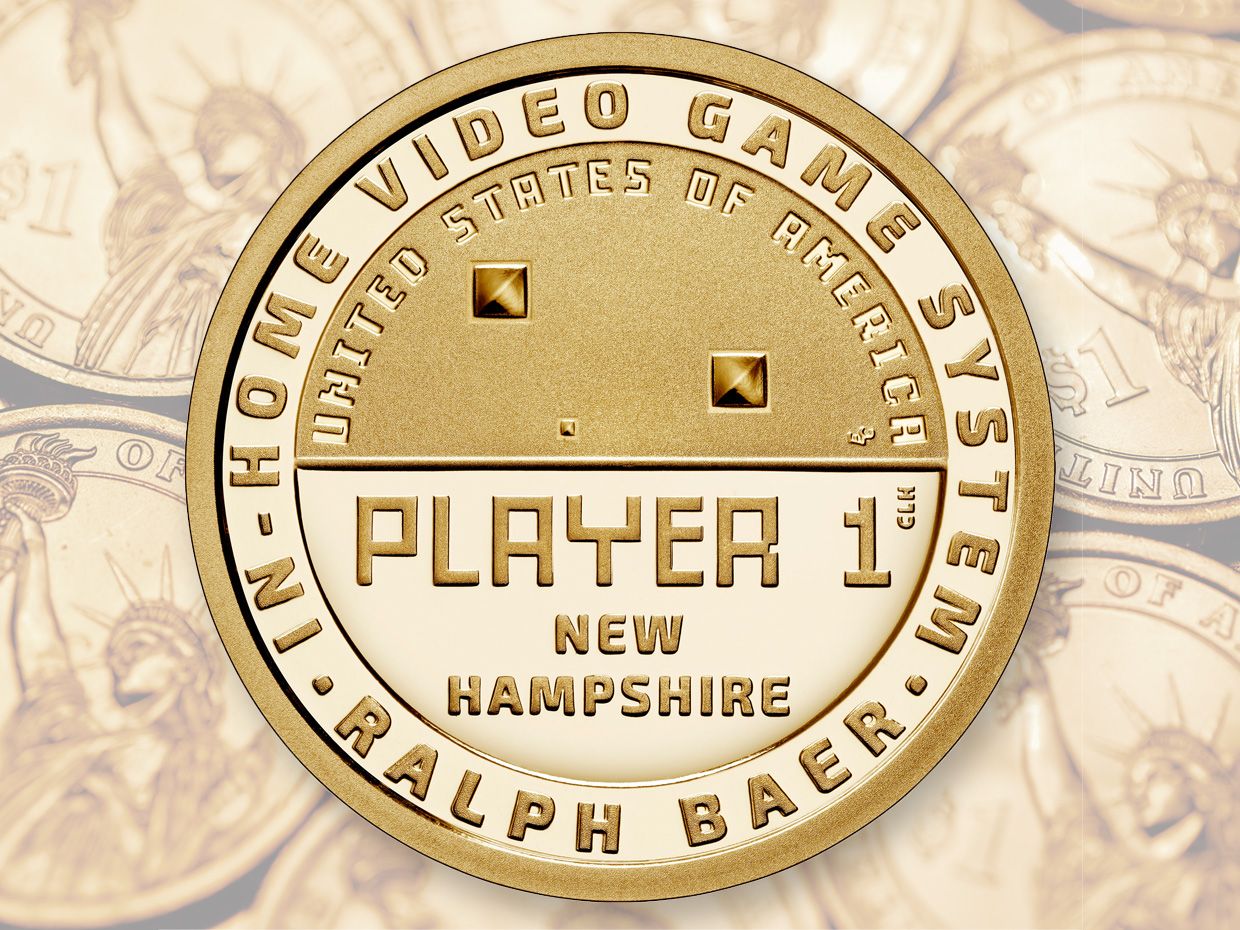THE INSTITUTE Gamers and coin collectors alike can now celebrate Ralph Baer's contributions with an American Innovation dollar from the U.S. Mint. Baer, an IEEE Fellow who is considered the father of the video game, developed the Brown Box, which paved the way for modern home video game consoles including the PlayStation and Xbox.
The Brown Box offered table tennis, football, and other games. It let people play on almost any television and thus spawned the commercialization of interactive video games.

The New Hampshire American Innovation coin, which recognizes the first in-home video game console, mimics an arcade token. It depicts a Brown Box game—handball—on one side. On the other side, the words New Hampshire and Player 1 are engraved on a stamped background. The words In-home video game system and Baer's name encircle the outside in text that is meant to pay homage to Baer's Odyssey game.
The coin “honors a story wherein an individual, Ralph H. Baer, made a great and positive difference in our lives and that would not have happened without the time, place, and opportunity that his life in America presented," his son Mark said in an interview with the Manchester, N.H., Ink Link. “It is good to keep that in mind, particularly in these divisive times. To be sure, we have a lot to be thankful for and a lot to celebrate."
The mint began the American Innovation dollar coin series in 2018 to showcase innovations from particular states or territories. The series is scheduled to run through 2032.
THE HISTORY OF THE FIRST CONSOLE
Baer sketched out his idea for the gaming console in 1966 outside the Port Authority Bus Terminal in New York City. He brought his idea to Sanders Associates—now part of BAE Systems—a defense contractor in Nashua, N.H., where he worked. An intrigued manager gave Baer US $2,500 for materials and assigned two engineers from the company to help him develop a prototype.
The Brown Box, a soundless multiplayer system, included clear plastic overlay sheets that could be taped to the player's TV screen to add color, playing fields, and other graphics. The console ran games off printed-circuit-board cartridges.
In 1968 the company licensed the system to television maker Magnavox, which named it the Odyssey. The company offered it in the United States in 1972 and sold 130,000 units the first year.

Baer's 1971 patent on a “television gaming and training apparatus," the first U.S. patent for video game technology, was based on the Brown Box.
He received the 2014 IEEE Edison Medal “for pioneering and fundamental contributions to the video-game and interactive multimedia-content industries." The medal is sponsored by Samsung.
The console was named an IEEE Milestone in 2015. Administered by the IEEE History Center, the Milestone program recognizes outstanding technical developments from around the world.
Baer's original video games are on display in the Innovation Wing at the Smithsonian Institution, in Washington, D.C.
IEEE membership offers a wide range of benefits and opportunities for those who share a common interest in technology. If you are not already a member, consider joining IEEE and becoming part of a worldwide network of more than 400,000 students and professionals.
Joanna Goodrich is the associate editor of The Institute, covering the work and accomplishments of IEEE members and IEEE and technology-related events. She has a master's degree in health communications from Rutgers University, in New Brunswick, N.J.



